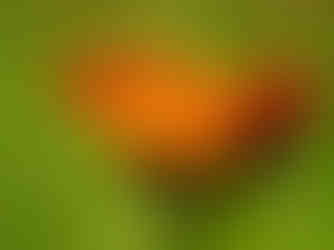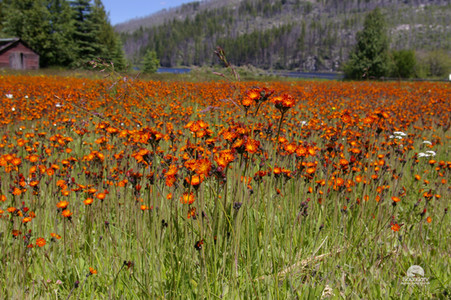Invasive Hawkweed VS Native Hawkweed
- Jen Haynes

- Sep 18, 2021
- 2 min read
There are 14 native and 14 invasive hawkweeds in B.C. Controlling the invasive hawkweeds is paramount to protecting our native hawkweeds. Nearly all hawkweeds in both the native and invasive groups have yellow flowers. White hawkweed is native. Orange hawkweed is invasive. Invasive yellow hawkweeds are hard to identify to species. There is also a lot of hybridization going on between the invasive yellow hawkweeds as well as between the invasive and native hawkweeds. One way to tell an invasive hawkweed from a native is to check if there are leaves up the stem. Invasive hawkweeds only have leaves at the base not up the stem. Invasive hawkweeds are perennials that spread by seed, stolons, and rhizomes. Invasive hawkweeds are a major concern. There is work being done on biological control, but it takes a long time to do all the required research and get approvals. Aulacidea subterminalis, a gall forming wasp, is in field trials for treatment of 4 of the invasive hawkweeds. Cheilosia urbana, a root feeding hover fly, is in trials for treatment of orange hawkweed. There are other agents that are being studied. Several agents have been rejected as they were not specific enough. Invasive hawkweeds can be controlled with herbicide treatment. When selective herbicides are applied in the spring and followed with nitrogen fertilizer, grass competition can keep orange hawkweed suppressed. Digging out plants is a challenge because you need to get all the root parts and stolons. Mowing is not recommended if you can use other options. Mowing at the right time can prevent seed production but it makes the plant spread more aggressively vegetatively which is the primary way it spreads. Tarping can work. Create competition by seeding grass and forbs. If you are using selective herbicide don't plant forbs for competition as there is the likelihood that the herbicide may kill the forbs. Selective herbicide doesn't kill grass so grass seeding is recommended after herbicide treatment. Invasive plants are often spread by recreationalists. Check your laces. Look under your vehicle. Check your spokes and chain. Look over your pets to make sure nothing is stuck in their fur. Clean your horses’ hooves. Make sure you take weed free feed for your horses when you do a pack trip. Stay on the trails. There are all sorts of ways to prevent the spread of invasive species and most of them only take a moment. Imagine how that one moment could impact the future. Think of the habitats and ecosystems you are protecting. For more information on preventing and managing invasive species please contact the Boundary Invasive Species Society at info@boundaryinvasives.com, 250-446-2446, Facebook and www.boundaryinvasives.com.






































Comments